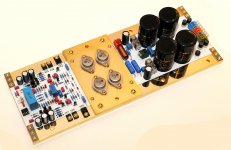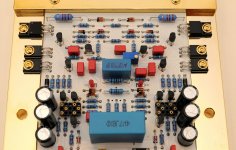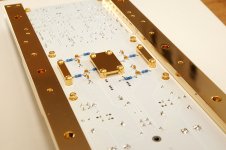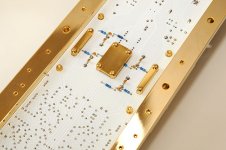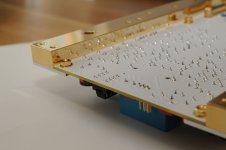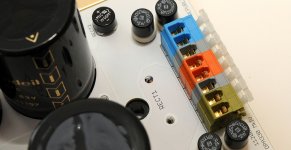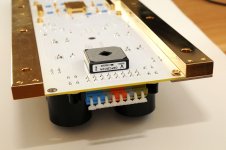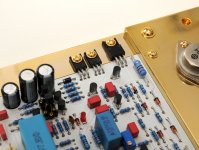Pavel, he is not worth of ban. We should let him talk with himself, like at his own forum. It is not good to provocate I...t. Ad him to "ignore list".
Last edited:
OK, lost fight... 😎
Could you explain what you mean by 'long term thermal shock'?
Yes: after one hour of full output power into eight ohm...
What is full output power ? Undistorted music production, or sine signal?
Nominal output power, i.e. in this case 120 W into eight, Federmann....
When measured Upupa epops really must know what to measure. Why are not writing?
Yes: after one hour of full output power into eight ohm...
Thank you, this makes it clear that your temperature measurement was taken after the heat sinks had time to reach thermal equilibrium. This is the best case scenario.
My concern is that the thermal resistance between the transistors and the heat sink is quite high because the heat must conduct laterally (which it does very poorly) before it can conduct to the heat sink.
A more informative test (and the worst case scenario IMHO) would be to take temp measurements while the amp is running under idle conditions, and then run the amp at full power for five minutes while taking the temperature of the transistor case and the heat sink.
It is the time taken to reach equilibrium that is a measure of the 'quality' of the heat sinking arrangement rather than the temperature differential at equilibrium (which you have already measured).
"RMS power" is known to be an incorrect expression.
As power in a resistor is RMS voltage multiplied by RMS current,
we should have a result in RMS² something, don't we ?
Watt are we accustomed to ?
As power in a resistor is RMS voltage multiplied by RMS current,
we should have a result in RMS² something, don't we ?
Watt are we accustomed to ?
Regarding output power definition
Regarding output power (sine rms), in every Stereophile power amplifier test John Atkinson does this:
"Before performing any tests on an amplifier, I run it for 60 minutes at one-third its specified power into 8 ohms"
So, if someone announces 500W amplifier, then this amp must be able to work at 166W for 60 minutes, if assessed seriously.
If someone claims 500W amplifier, which in fact is able to give long time output power hardly 50W, then such a claim is nothing but a hoax.
Regarding output power (sine rms), in every Stereophile power amplifier test John Atkinson does this:
"Before performing any tests on an amplifier, I run it for 60 minutes at one-third its specified power into 8 ohms"
So, if someone announces 500W amplifier, then this amp must be able to work at 166W for 60 minutes, if assessed seriously.
If someone claims 500W amplifier, which in fact is able to give long time output power hardly 50W, then such a claim is nothing but a hoax.
RMS power is by parsing definition, wrong, BUT who cares? It means something in the audio world, and really, that is what counts. This is one of those, what we call, pseudo-intellectual arguments. The 2 stage power transistor mounting is potentially very good, but it is actually the very best to get a heat-sink with an L in its extruded shape, in order to get the thermal resistance to a minimum. We tried to do it the 2 stage way with the Lineage Power Amp in the 80's and it became difficult to do.
PMA, I hope I don't cause any problem, BUT I actually talked to the guys who helped create the 1/3 power pre-conditioning. They did it to discourage Phase Linear, as they were SAE, and they used better heat-sinks. It is true that it is a standard, BUT it is a suspicious standard.
Biggest difference in temperature is between case of device and pad bellow ( in case if is insulated ) - in this concrete example it was 10°C and temperature dissipation of each mosfet was circa 25-30W ( as I remember, it was in the year 91' ). Temperature drop between pad bellow and nearest top of the heatsink was surprisingly small, only 3-4°C....
DPA-330 Gold Edition 🙂
I built Pavel's old amp model named DPA-330. Here is the some pics of my work.
-
I built Pavel's old amp model named DPA-330. Here is the some pics of my work.
-
Attachments
Looks excellent, It would even be a pity puting those modules in a chassis so that you couldnt see the modules, maybe something with a glass top would be good.
Juan forgot to say that we gave this AMP edition a nickname. (Admins please forgive us)
"Masturbator Edition"
because they are built with so much attention to detail which we all know including Juan and Pavel do not have impact on it's sound but Masturbator edition is made just for the joy from craft itself and enjoyment of bringing aesthetics and true craftmens perfectionalism into DYI world.
"Masturbator Edition"
because they are built with so much attention to detail which we all know including Juan and Pavel do not have impact on it's sound but Masturbator edition is made just for the joy from craft itself and enjoyment of bringing aesthetics and true craftmens perfectionalism into DYI world.
I'm still working on it, see new pictures. Added speaker protection and clipping indication. Now on heat-sink.
Attachments
-
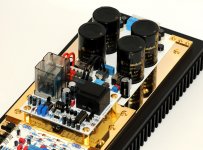 DSC_3543-2000.jpg324.1 KB · Views: 397
DSC_3543-2000.jpg324.1 KB · Views: 397 -
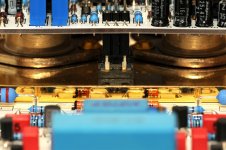 DSC_3538-2000.jpg339.6 KB · Views: 372
DSC_3538-2000.jpg339.6 KB · Views: 372 -
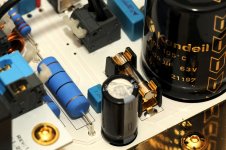 DSC_3536-2000.jpg279.8 KB · Views: 263
DSC_3536-2000.jpg279.8 KB · Views: 263 -
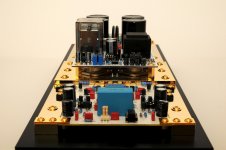 DSC_3527-2000.jpg200.1 KB · Views: 256
DSC_3527-2000.jpg200.1 KB · Views: 256 -
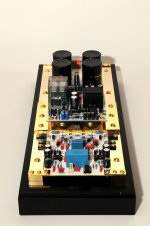 DSC_3526-2000.jpg230.7 KB · Views: 240
DSC_3526-2000.jpg230.7 KB · Views: 240 -
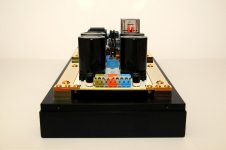 DSC_3521-2000.jpg138.7 KB · Views: 241
DSC_3521-2000.jpg138.7 KB · Views: 241 -
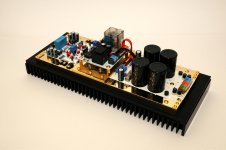 DSC_3520-2000.jpg206.6 KB · Views: 324
DSC_3520-2000.jpg206.6 KB · Views: 324 -
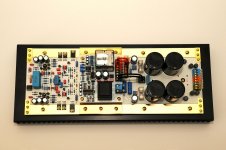 DSC_3516-2000.jpg277.8 KB · Views: 434
DSC_3516-2000.jpg277.8 KB · Views: 434 -
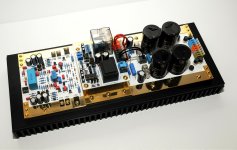 DSC_3513-2000.jpg270.8 KB · Views: 500
DSC_3513-2000.jpg270.8 KB · Views: 500 -
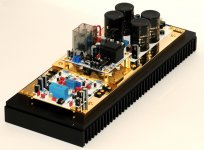 DSC_3544-2000.jpg272.5 KB · Views: 353
DSC_3544-2000.jpg272.5 KB · Views: 353
Last edited:
- Status
- Not open for further replies.
- Home
- Amplifiers
- Solid State
- Pavel Dudek's (Upupa Epops) amplifiers II
